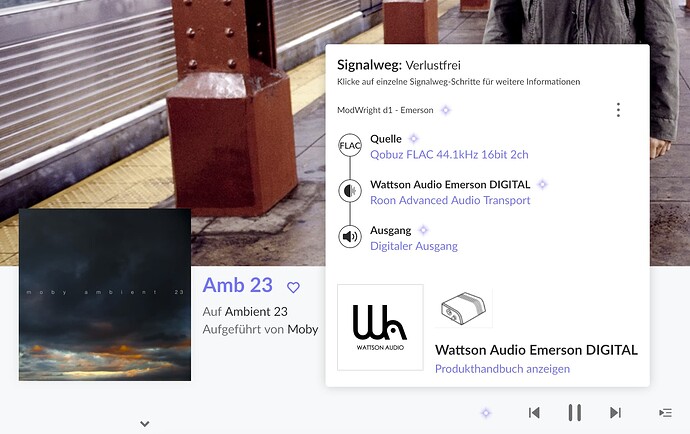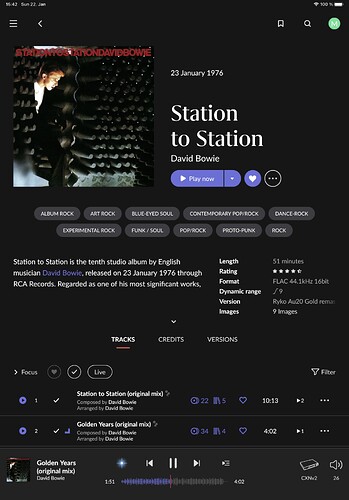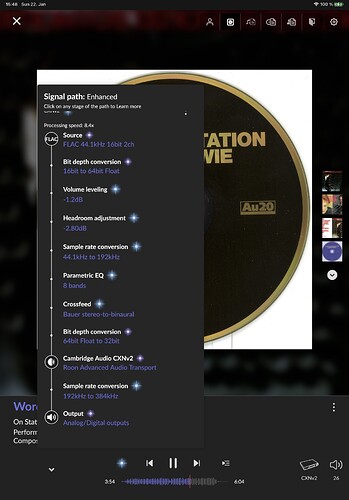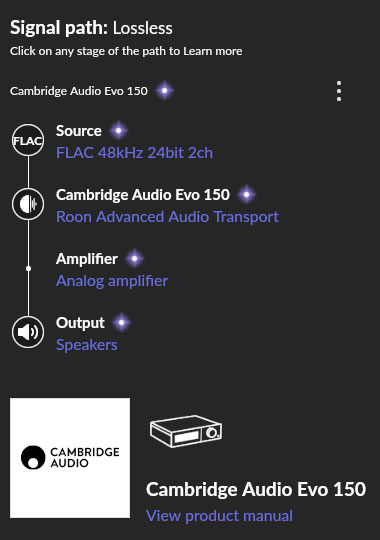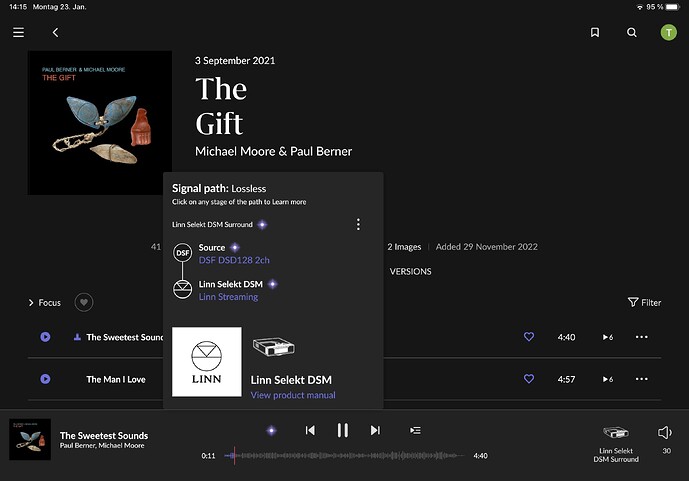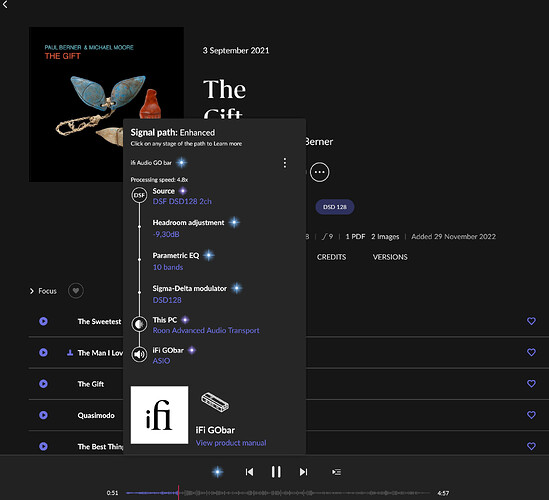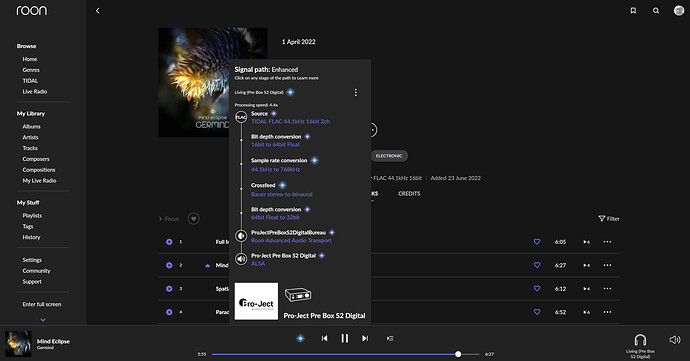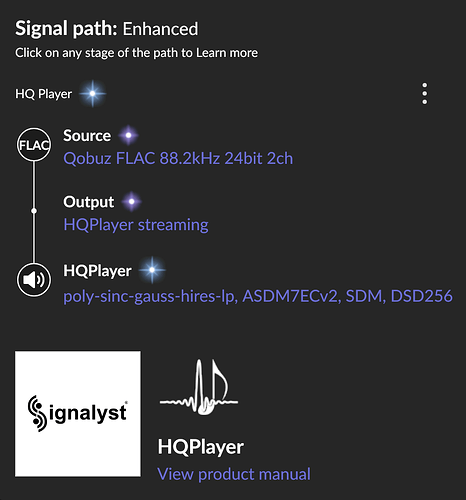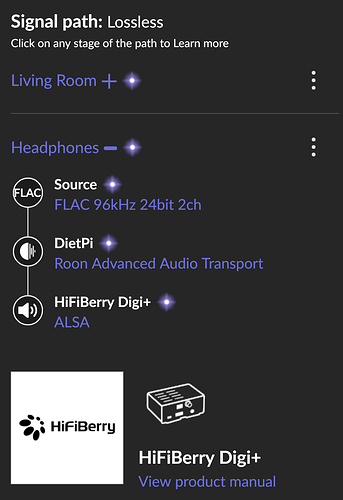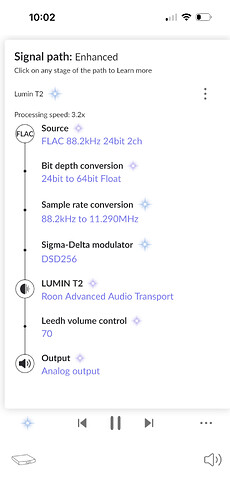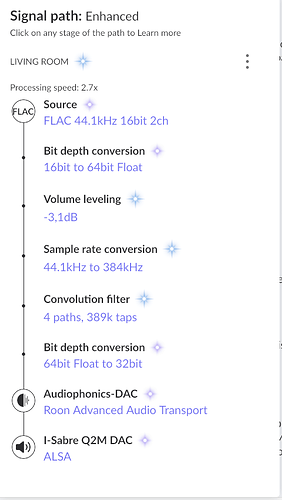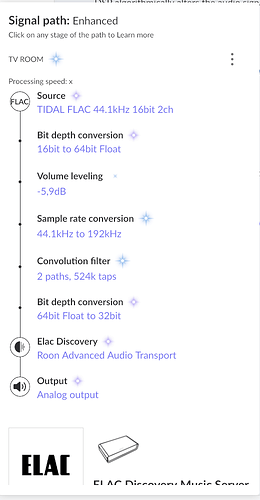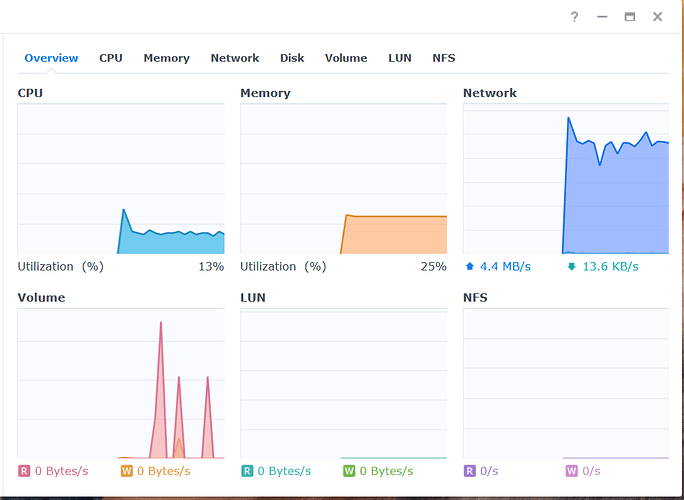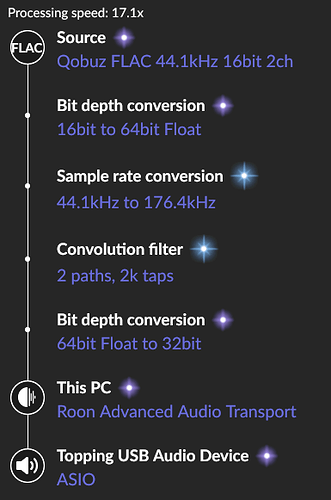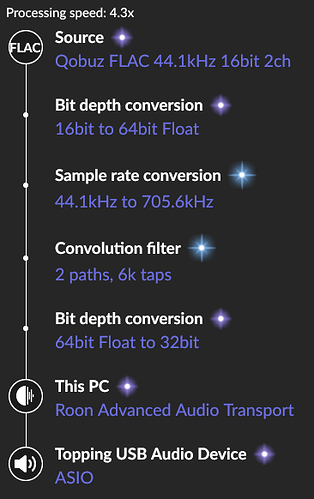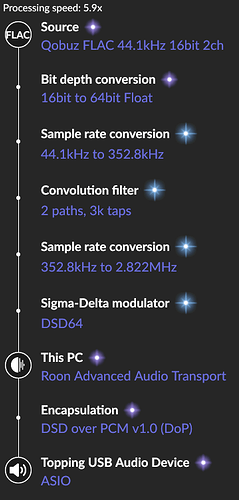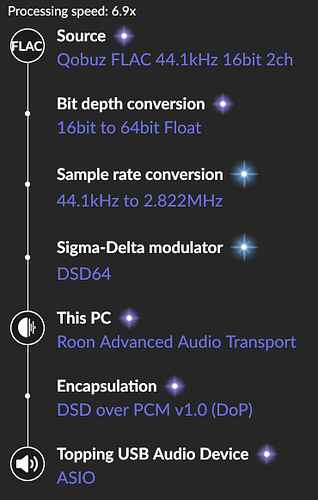A new addition to my system, the Wattson Audio Emerson DIGITAL, now feeding my DAC via S/PDIF. Before my Nucleus was a direct source via USB.
First listening tests are underway, but I still need time, leisure and an hour without the family around me to be able to say more… ![]()
Not a whole lot going on. The Bifrost 2 Multibit doesn’t need much help if any.
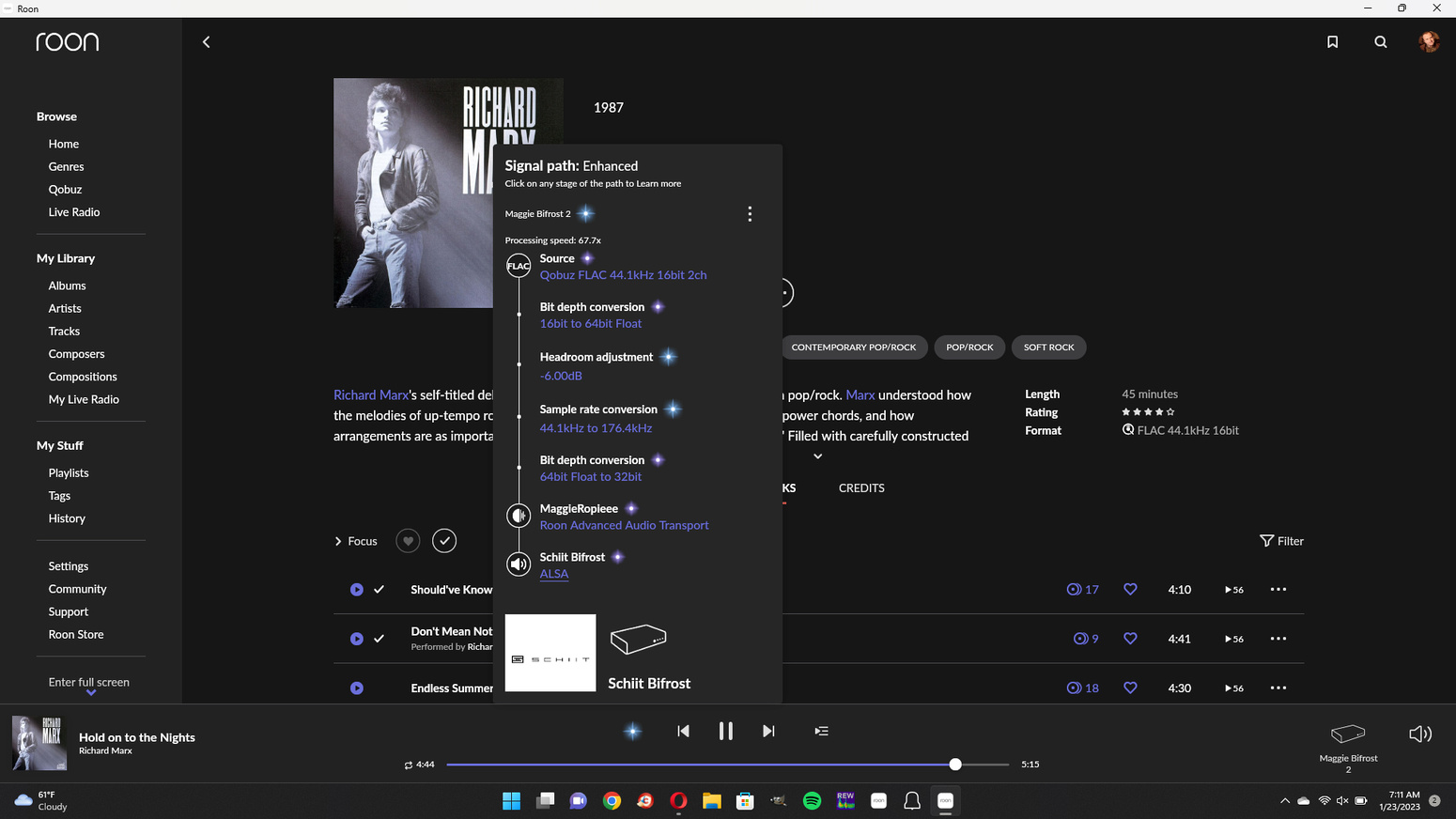
My living room desk setup ![]()
![]()
Tidal Hifi → RPi 4 powered by Ropieee → Pro-Ject Pre-Box S2 Digital with Pro-Ject Accu Box S2 USB → xDuoo TA 20 → Dan Clark Audio Stealth
Pls post impression, over the filters thread :), for piano and jazz/electro I’m a week now with
![]()
One little thing that bugs me about Roon. When I use convolution filters, the “purple star” disappears and turns blue, suggesting worse sound.
This is wrong! It sounds worlds better with convolution. So I ask: please change this (convolution = purple)!
Thank you
Hi @Matthias_Josch,
- Purple = Bit Perfect
- Blue = Enhanced
Once DSP is performed the signal is no longer bit perfect, Roon reports this as enhanced which does not suggest “worse sound” to me, quite the opposite I’d say.
Thanks, Carl.
Means: blue is the indicator for best sound?
It’s not a strict hierarchy. The color is just an indication of the type of processing. If DSP is done for the purpose of compatibility, it could sound worse, while if it’s done for correction, it should sound better. In all honesty though, the colors do seem to suggest that higher frequency (lower wavelength) means higher quality, and blue comes before purple in the spectrum ![]()
What do the convolution filters do? If they don’t affect frequencies above 20kHz, you can save quite a bit of processing by running them at 44.1kHz and doing the conversion after (or skipping it altogether).
I don’t believe that this is possible in Roon. Sample rate conversion happens before the filters.
One of them is a HAF convolution filter for room correction and probably cross talk elimination 4 channel is overkill and 2 channel would do. Roon cannot upsample after DSP.
I monitor how the underspecced (as per Roon) NAS handles the load. Pretty good so far.
Thanks. You are both right… to a degree. To test this, I added a 44.1kHz WAV convolution filter. With no sample rate conversion, I got this:
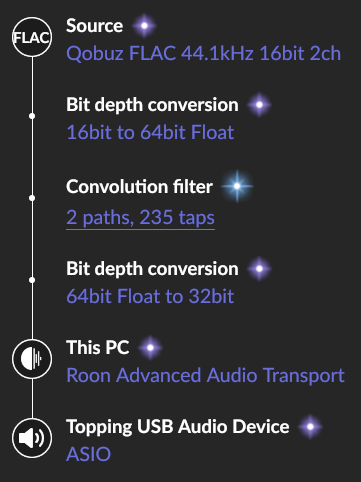
Roon has no problem doing convolution at 44.1kHz with 235 taps. But when I added sample rate conversion to 176.4kHz, I got this:
Now, Roon is up-sampling before convolution, and the number of taps increases to 2k. Roon must have converted the filter from 44.1kHz to 176.4kHz. This is inefficient compared to filtering at 44.1kHz as before, since you have more taps and more samples to process - not to mention the need to up-sample the filter. I then set the sample rate conversion to 705.6kHz:
Again, all up-sampling happens before convolution. This is even more inefficient, with 6k taps and 16x more samples to deal with. But now comes the strangest part: when I convert to DSD, I get this:
Now, up-conversion happens in 2 steps: 8x before convolution (with 3k taps) and 8x after convolution. How weird is this? For one, Roon is totally fine doing an up-conversion after convolution, so there is no real reason not to do it this way in the previous two cases. Then, although Roon has no problems convoluting at 705.6kHz, it chooses to do it at 352.8kHz. This does save quite a bit of cycles, as you can see in the processing speed: conversion to DSD is more efficient, even if there’s more processing involved. It’s clear that most savings would be obtained convoluting at 44.1kHz, so doing it at 352.8kHz is dubious. I thought maybe Roon doesn’t want to do a 64x up-conversion in one step, so I removed the filter, kept the DSD conversion and got this:
The 64x sample rate conversion is done in a single step, so no limitations there.
Bottom line: I think there’s a bug in Roon’s choices when combining convolution and up-conversion. The results are most probably equivalent from an SQ point of view. However, purists may find this upsetting, and the added inefficiencies could impact the ability to do DSP on low-powered machines.
